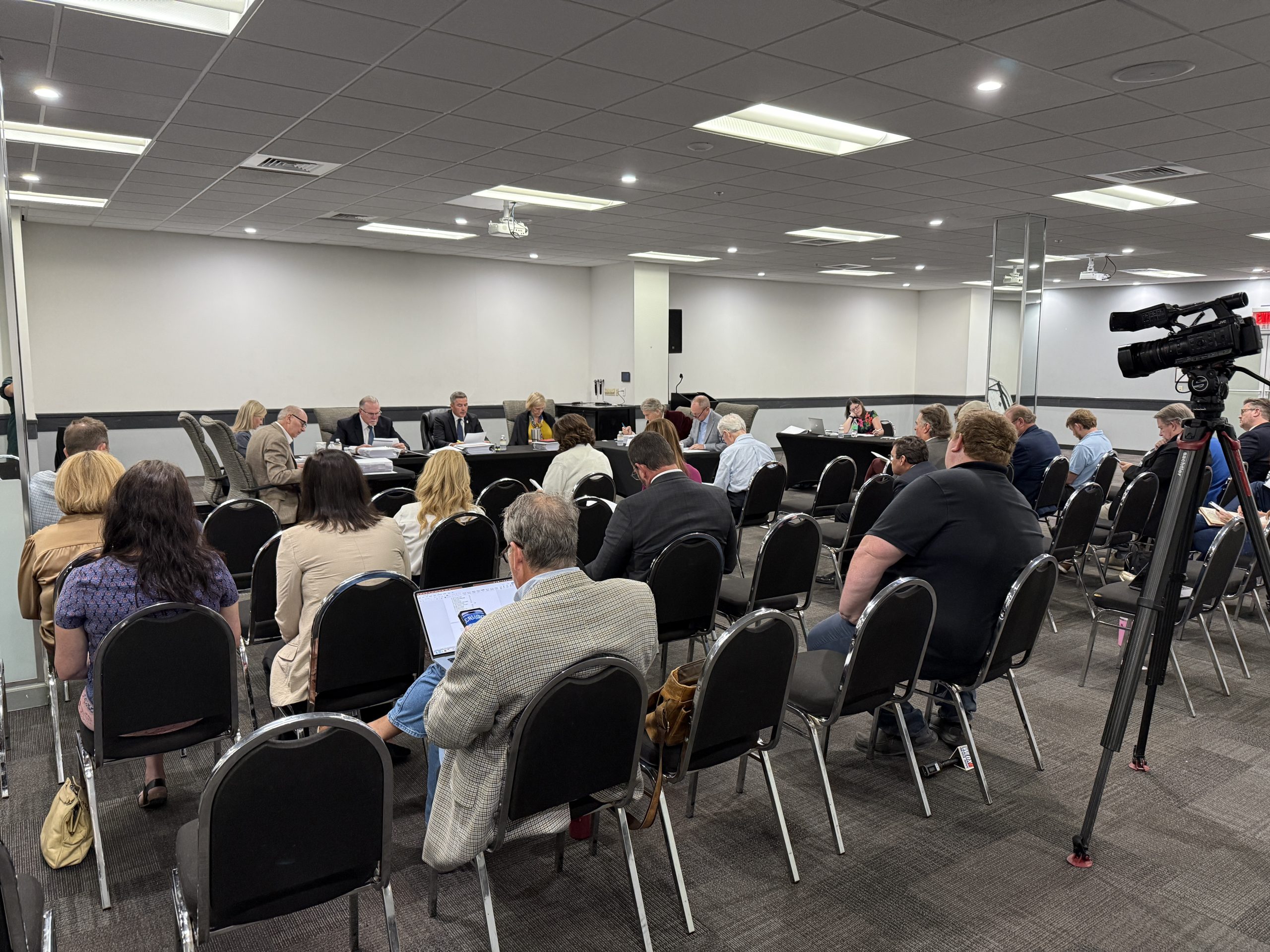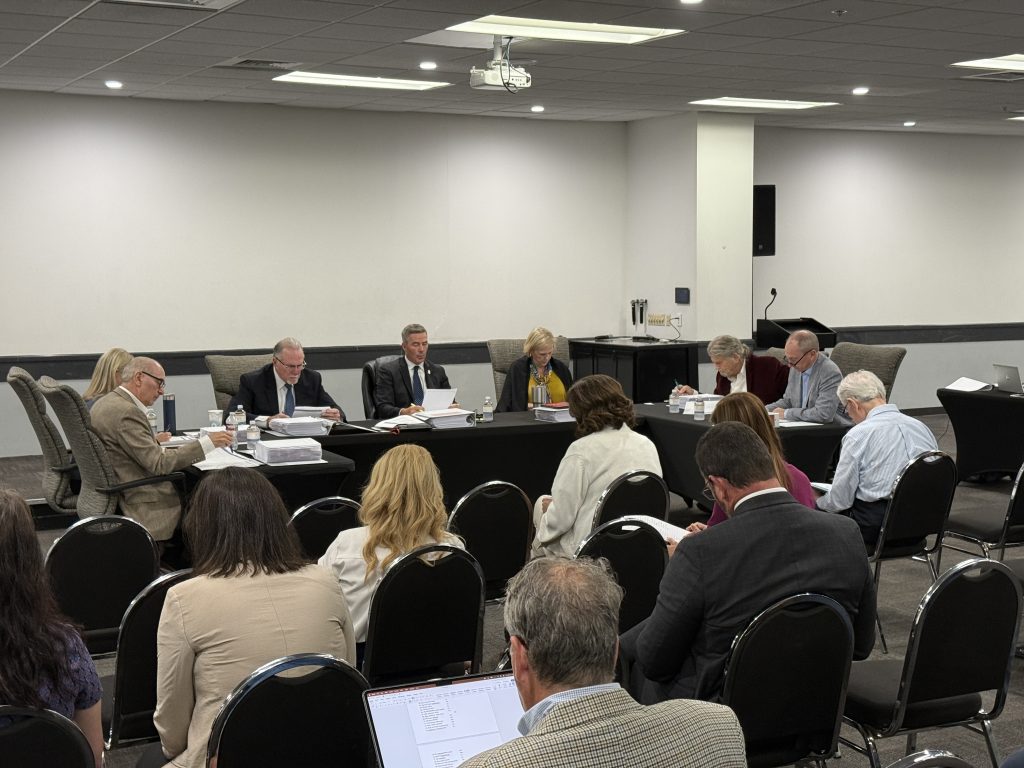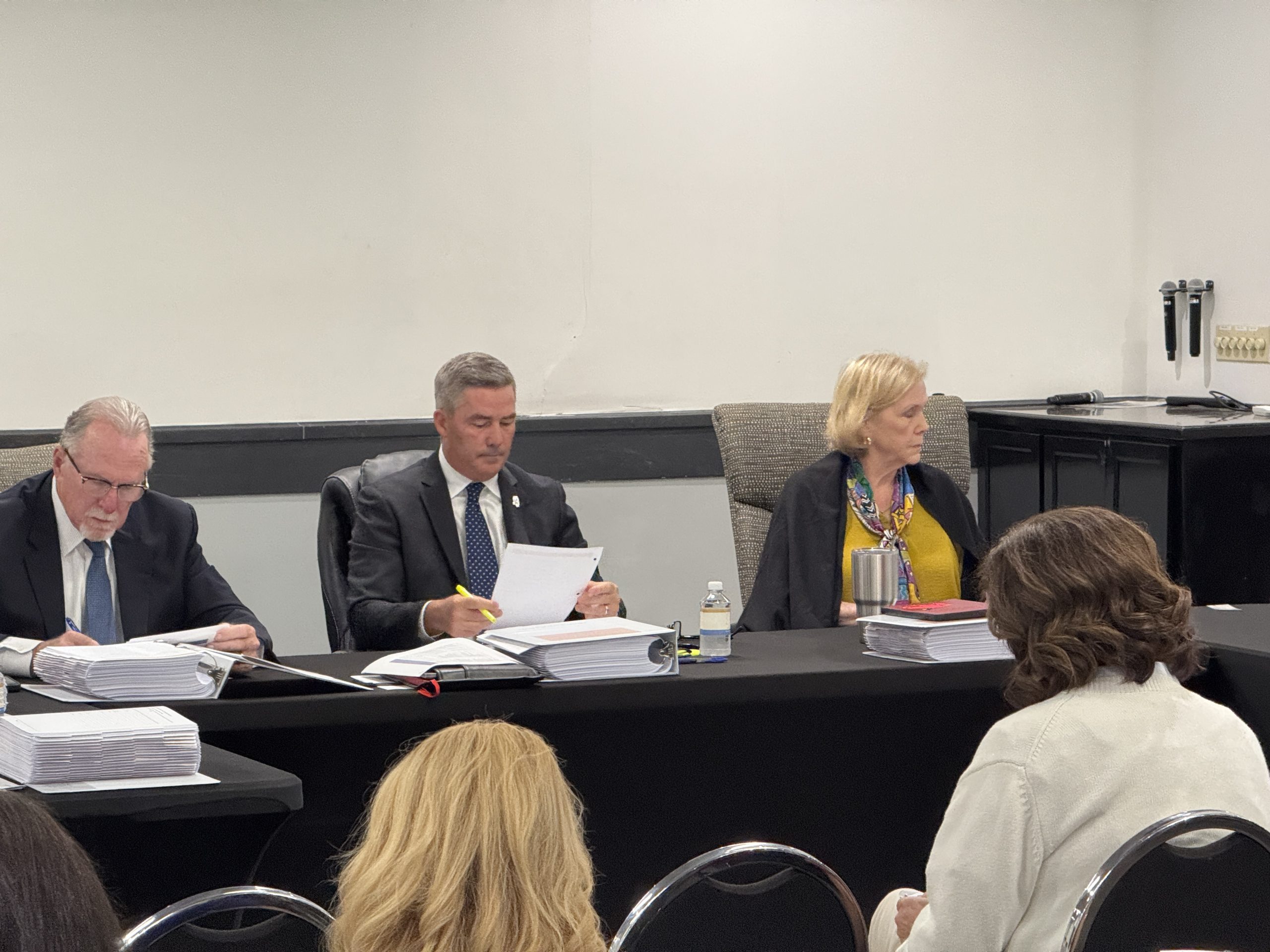The Gulf Coast Restoration Fund (GCRF) Advisory Board convened on Thursday, October 2, at the Knight Nonprofit Center’s Regions Banquet Room for the first meeting of the 2026 session.
Chaired by Jamie Miller, President and CEO of the Gulf Coast Business Council, the meeting marked the start of a three-part review process to evaluate this year’s project submissions.
The session was open to the public, with approximately 40 attendees representing project applicants, community leaders, and business professionals interested in understanding the review process and next steps.
Process and Purpose
Each year, the GCRF Advisory Board reviews new project applications submitted through the Mississippi Development Authority (MDA) portal. Prior to the meeting, board members received MDA’s scoring assessments, which provide one layer of analysis in the decision-making process.
However, MDA scoring does not determine outcomes. As Chairman Miller explained, the board’s role is to assess whether each project aligns with the legislative intent of the GCRF—to fund projects that generate long-term, large-scale economic impact across the lower six counties of South Mississippi.
Rather than labeling projects as “good” or “bad,” the board’s approach centers on fit and impact: whether a project strengthens the regional economy, aligns with legislative goals, and supports transformational outcomes.
Legislative Priorities Influencing the Review
The board’s deliberations are informed by Senate Bill 2002, the enabling legislation that establishes the process, scoring and recommending projects. The Gulf Coast Restoration Fund Advisory Board evaluates applications based on their ability to accomplish the fifteen (15) legislative priorities listed in the legislation. The fifteen legislative priorities are as follows:
- Projects that will impact the long-term 209 competitiveness of the region and may result in a significant 210 positive impact on tax base, private sector job creation and 211 private sector investment in the region.
- Projects that demonstrate the maximum long-term economic benefits and long-term growth potential of the region based on a financial analysis such as a cost-benefit analysis or a return-on-investment analysis.
- Projects that demonstrate long-term financial sustainability, including clear performance metrics, over the duration of the project.
- Projects that leverage or encourage leveraging of other private sector, local, state and federal funding sources with preference to projects that can demonstrate contribution from other sources than funds from the BP settlement.
- Projects that are supported by multiple government or private sector entities.
- Projects that can move quickly and efficiently to the design, engineering, and permitting phase.
- Projects that enhance the quality of life/place and business environment of the region, including tourism and recreational opportunities.
- Projects that expand the region’s ability to attract high-growth industries or establish new high-growth industries in the region.
- Projects that leverage or further enhance key regional assets, including educational institutions, research facilities, ports, airports, rails and military bases;
- Projects that are transformational for the future of the region but create a wider regional impact.
- Projects that enhance the marketability of existing industrial properties.
- Projects that enhance a targeted industry cluster or create a Center of Excellence unique to the region.
- Infrastructure projects for business retention and development.
- Projects that enhance research and innovative technologies in the region.
- Projects that provide outcome and return on investment measures, to be judged by clear performance metrics, over the duration of the project or program.
From 87 Projects to 53
During the October 2 meeting, the board reviewed all 87 submitted projects and narrowed the list to 55 for further consideration.
This step does not reflect project quality but rather a strategic refinement, identifying those projects that warrant deeper review.
Projects Advancing for Further Consideration
- ATM Holdings, LLC – Legacy Park Town Center
- Bayside Luxury Garage Condominium, LLC – Bayside Garages Biloxi
- BEST Holdings – Tomaston Medical Park Phase 1A Development
- Bollinger Shipyards – Bulkhead Rehabilitation for Polar Security Cutter Program
- City of Diamondhead – Commercial District Transformation Phase IV
- City of Gautier – Town Commons Park Development Phase 3
- City of Lucedale – Cowart Street Improvements
- City of Moss Point – Highway 63/Escatawpa Natural Gas Pipeline Expansion
- City of Moss Point – Downtown Infrastructure & Renewal Phase II
- City of Pascagoula – Lowery Island Restoration Project
- City of Pass Christian – East North Street Extension
- City of Picayune – Friendship Park Revitalization Project: Phase II
- City of Waveland – Coleman Avenue Revitalization & Flood Risk Reduction
- City of Wiggins – Hall Street Widening
- Copper Llama, LLC – Copper Llama Distillery
- George County Board of Supervisors – Industrial Park Water System Expansion
- George County Regional Health System – Infrastructure & Site Development
- George County Regional Health System – Health & Rehab Revitalization
- Gillum-Young, Robinson & Harris – Gulfport Gaslight District
- Gulfport-Biloxi Regional Airport Authority – Rental Car Ready Return Canopy
- Gulfport-Biloxi Regional Airport Authority – Runway 18-36 Extension
- Hancock County Port & Harbor Commission – Stennis Airport Site 1 Hangar Development
- Harrison County Board of Supervisors – Advanced Research & Development Trust Fund
- Harrison County Development Commission – I-10 & Canal Road Site Development
- Harrison County Development Commission – Coastal Revolving Loan Fund
- Harrison County School District – Career & Technical Workforce Development Expansion
- Harrison County Sheriff’s Office – Law Enforcement Training Academy Phase II
- INFINITY Science Center – All for STEAM & STEAM for All Initiative
- La Pointe-Krebs Foundation – Interpretive Center
- Lazy Palm Hotel/Food Hall – Hotel & Food Hall Project
- Long Beach Harbor – Complex Restoration
- Lynn Meadows Discovery Center – Blue Economy STEM Center
- Memorial Hospital Foundation – Multispecialty Center
- Memorial Hospital Gulfport – Intermodal Transportation Center & Parking Structure
- Mississippi Coast Model Railroad Museum – Next Stop: Enhancement!
- Mississippi Enterprise for Technology (MSET) – Startup Gulf Coast
- Mississippi Gulf Coast Community College – National AI Center for Excellence
- Mississippi Gulf Coast YMCA – Aquatics Safety Center
- Mississippi State University Extension Service – Lower Pearl River Watershed Environmental Education Center
- MS Coast Coliseum Commission – Complex Expansion
- Ocean Springs Islands RV Resort, LLC – Pine Island Revitalization
- Pat Harrison Waterway District – Flint Creek Lakeside Restaurant
- Pearl River County Board of Supervisors – Industrial Park Speculative Building
- Port Pascagoula – West Harbor Warehouse
- Singing River Health System – Healthcare Academy Expansion Phase II
- Stone County Board of Supervisors – Industrial Park Land/Sewer Project
- Stone County School District – Middle School Career & Technical Education Implementation Phase III
- Superior Optical Labs, LLC – Facility Expansion for Government Contracts
- Mississippi Songwriters Festival / Alliance – Performing Arts Center & Museum
- The University of Southern Mississippi – Research & Teaching Vessel
- The University of Southern Mississippi Research Foundation – Gulf Blue Mission Acceleration Connector
- Visage Production Inc. – UAS Manufacturing Plant
- William Carey University – Tradition Campus Student Housing

Next Steps
The next advisory board meeting on Tuesday, October 14 at 2:00 PM at the Knight Nonprofit Center, will include further discussion and a vote on these 55 projects to determine which will move forward to the presentation phase, where applicants will be invited to present in five-minute sessions during an all-day meeting on Monday, November 3 at 8:30 AM.
The board aims to finalize recommendations to the Mississippi Development Authority by early November, ahead of the December 1 legislative deadline.
About the GCRF Advisory Board
The Gulf Coast Restoration Fund invests in transformational projects that strengthen the Mississippi Gulf Coast through strategic, large-scale economic development initiatives. Advisory board members are appointed by the Governor, Lieutenant Governor, and Speaker of the House, and serve to recommend projects that best advance the region’s long-term growth and resilience.
In addition to Miller, GCRF Advisory Board members include:
Greg Cronin – Speaker of the House Appointee
Mark Cumbest – Lt. Governor Appointee
Susan Grice – Governor Appointee
Becky Montgomery – Governor Appointee
Jim Simpson – Speaker of the House Appointee



